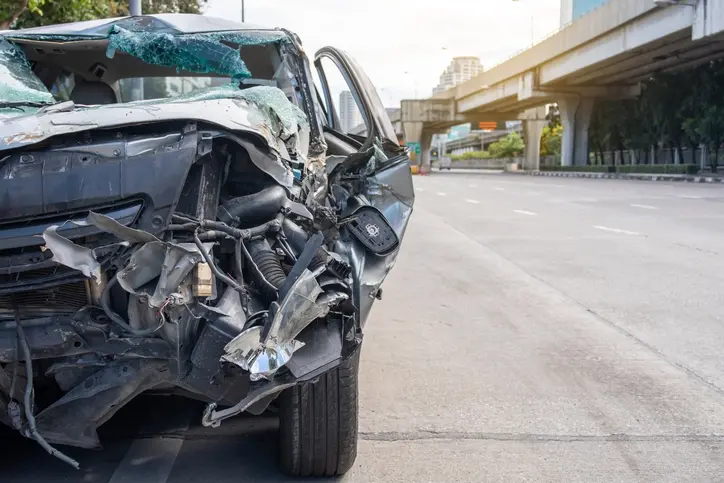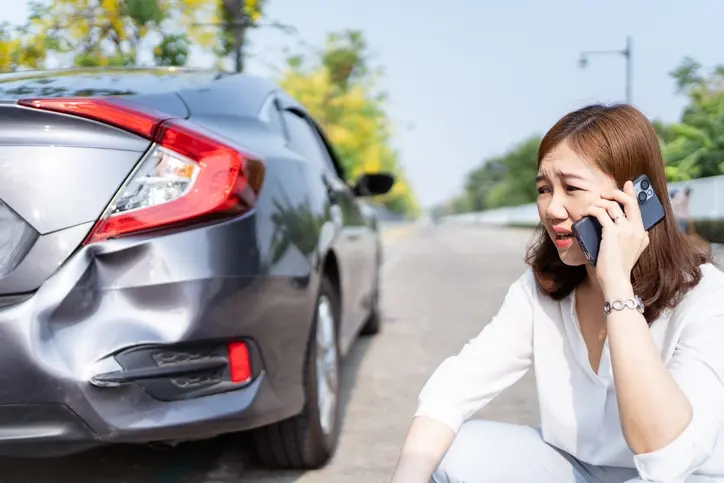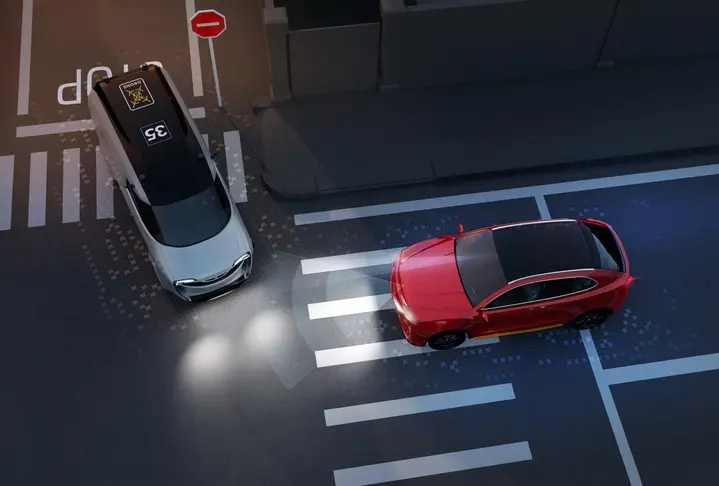Self-driving cars are here, and they’re estimated to grow as U.S. companies like Mercedes increase investment in automatic vehicle (AV) technologies. But what happens if the vehicle miscalculates and causes a self-driving car accident? What if someone hits you while riding a self-driving vehicle?
The way we drive is evolving, and auto accident law must evolve in response to these changes. If you were hurt during a self-driving car accident and confused about your rights, you may need an auto attorney to analyze your case. Read further to learn about self-driving car accidents, but an attorney can help with the specifics of your case.
Free Auto Accident Evaluation
Hurt in a wreck that wasn’t your fault? Click here to speak with a nearby attorney for FREE about your Auto Accident claim.
or call (888)-927-3080
Self-Driving Car Accident Law – Key Takeaways
- Stay in the area, call the authorities, and exchange information with the other driver after a self-driving car accident.
- The person at-fault in a self-driving car accident depends on the situation, and your state handles negligence differently than others.
- Car accidents caused by self-driving cars are infrequent, but technology is developing and accidents have occurred.
- Vehicle automation is categorized in six levels, ranging from simple reminders to fully-automated driving.
- Self-driving car accident law is continually changing, but some states already have statutes responding to recent technologies.
First Steps After a Self-Driving Car Accident

The first step during a self-driving car accident is to confirm everyone’s safety after the crash. Most states require you to stay in the vicinity of the crash while authorities arrive. If you suddenly leave the area, you may be guilty of a hit-and-run.
Waymo self-driving taxis have a customer service feature you can use to report the crash to emergency services. If someone needs immediate medical assistance, don’t hesitate to call 911.
After confirming everyone’s safety, state and federal law requires you to exchange information with the other driver(s) after the crash. Keep the exchange cordial but direct, and avoid saying anything incriminating that can imply liability for the crash.
Examples of information you should exchange after a self-driving car accident:
- Auto insurance info
- Name, address, and phone number
- License plate number
Some states require you to call the authorities if bodily injury or certain amounts of property damage result from the crash. The most valuable form of evidence from a self-driving car accident is a traffic collision report.
A traffic collision report can help you and your attorney prove your damages as well as liability after a crash. For more car crash evidence, gather the following types of information to help your case:
- Pictures of injuries and property damage
- Eyewitness testimonies
- Pictures of the area after the accident
A self-driving car accident may involve suing the manufacturer for car malfunctions that caused your collision. You may have to file a claim against the at-fault driver for hitting you while inside of a self-driving vehicle.
Your claim heavily depends on your state and specifics regarding your accident, so you may need an auto accident attorney to organize your case. Some states operate under comparative negligence, meaning you may qualify for a settlement even if partially at-fault for the accident.
Who is At-Fault in a Self-Driving Car Accident?

The party at-fault in a self-driving car accident depends on the specific circumstances of the collision. This is why gathering evidence after an automatic vehicle collision is key, to prove liability for your case.
The driver in the AV may be liable if they neglected to follow reasonable caution during their ride, causing the collision. The other driver who hit you may be at-fault if they neglected their duty of care to follow traffic rules.
The manufacturer can even be found at-fault if a malfunction ultimately caused the collision, falling into product liability law. New vehicles like AVs come with a black box that records vital information just before a collision, like:
- Vehicle speeds before, during, and after a crash
- Airbag deployment
- Brake information
- Steering angles
- Seatbelt use
There are other types of information a black box stores to inform authorities and insurance adjusters the nature of your collision. You need as much evidence as possible if you want to prove liability, for yourself, the other drivers, and the manufacturer for your self-driving vehicle.
Self-Driving Car Accident Statistics
The NHTSA recorded vital statistics for self-driving car accidents involving vehicles with Automatic Driving Systems (ADS). They found that out of the 130 crashes they studied, 16 sustained injuries. Most of the crashes resulted in no injuries, and were the product of rear-end accidents.
Out of the 108 collisions, 11 of them involved a vulnerable road user, like a bicyclist or nearby pedestrian.
It’s important to note that self-driving technology at the time of this article is in the early stages of development. A self-driving car may not be able to handle abnormal circumstances on the road.
Stay cautious while inside a self-driving vehicle, and remain vigilant to maintain vehicle safety for everyone on the road.
The 6 Levels of Vehicle Autonomy

Vehicle autonomy comes in various forms, from simple cruise control to fully-automated driving without supervision. It’s important to know what levels of vehicle autonomy your self-driving car uses. This measures your liability and ability to control your vehicle during a crash, the baseline for your legal claim.
The NHTSA measures vehicle automation in these 6 levels:
Level 0 – Momentary Driver Assistance
The vehicle gives assistive help to the driver like collision reminders and lane departure warnings. These features do not take over the vehicle, and drivers must steer, brake, and accelerate.
Examples of momentary driver assistance features include:
- Automatic emergency braking
- Collision reminders
- Lane departure warnings
Level 1 – Driver Assistance
The car may assist the driver with steering, braking, OR accelerating while the driver remains responsible for the ride. Drivers may allow the car to assist with these functions, but the driver must remain engaged and attentive.
Examples of driver assistance include:
- Lane assist
- Adaptive cruise control
Level 2 – Additional Assistance
This level of assistance allows the car to aid in steering, braking, AND accelerating. The driver must still stay alert throughout the ride, but their car may help with driving tasks under certain circumstances.
Examples of additional assistance include:
- Highway pilot
Level 3 – Conditional Automation
Conditional automation occurs when the system fully takes over driving tasks under certain circumstances while the driver remains on-standby. Whenever prompted or if the system malfunctions, the driver is expected to take over the remaining driving duties.
Level 4 – High Automation
A car reaches high automation when the system fully takes over driving tasks under broader circumstances than conditional automation. People inside the vehicle can act as passengers and don’t need to stay engaged on the road.
Under certain service areas, the vehicle can take over all driving tasks with no one required to maneuver the vehicle. Human drivers are not needed to drive a car with high automation when engaged.
Level 5 – Full Automation
Under full automation, a self-driving car is responsible for all driving tasks while occupants act as passengers, not requiring engagement. The vehicle can act independently under all circumstances, and drivers are not needed to maneuver the vehicle.
Laws Regulating Self-Driving Car Accidents
Because self-driving cars are a new form of technology, states may have to update their laws to accommodate car accidents involving AVs. Some states like California have already updated their statutes to include AVs into their traffic codes.
“The driver shall be seated in the driver’s seat, monitoring the safe operation of the autonomous vehicle, and capable of taking over immediate manual control of the autonomous vehicle in the event of an autonomous technology failure or other emergency.”
Cal. Veh. Code § 38750(b)(2)
Be prepared to research your state’s car accident laws to learn how your state handles liability. If your self-driving car crash was caused by the car itself, you may have to sue the manufacturer for negligence. Your state may have product liability laws covering autonomous vehicles, but consult with your attorney for further info.
Types of Damages From a Self-Driving Car Accident
A self-driving car accident may involve economic damages paid through the victim or from an auto accident lawsuit. These expenses add up, and it shouldn’t be fair to pay for damages that you did not cause.
Examples of economic damages you may suffer from:
- Medical bills
- Repair fees
- Lost wages
- Property damages fees
Not only do you suffer from bills and fees after a self-driving car accident, but the non-economic damages may weigh on your mind for years to come.
Forms of non-economic damages include:
- Pain and suffering
- Emotional distress
- Loss of consortium
- Pain and disfigurement
The emotional burden may be worse than the fees, which is why it’s important to document everything regarding your case.
Find an Attorney to Protect You From a Self-Driving Car Accident
If you need an attorney to sort out your self-driving car accident claim, LegalASAP can help. We have 500+ attorneys across the United States who may be available to analyze your case. Have all of your legal questions answered by a professional, and leave nothing on the table for your settlement.
If you’re worried about the cost for a consultation, most of our attorneys work under contingency. This means attorney fees are taken out of your settlement once you win rather than paying out-of-pocket.
If you’re still wondering whether you qualify, speak to one of our representatives to match with a local attorney.
Jan Reburiano is a content writer and SEO specialist for law firms focusing on personal injury, disability, employment law, among other practices. He has written and edited numerous articles and created commercial spots for broadcasters that you can find in his LinkedIn. Jan currently lives in Los Angeles, California while writing for clients from around the United States.


